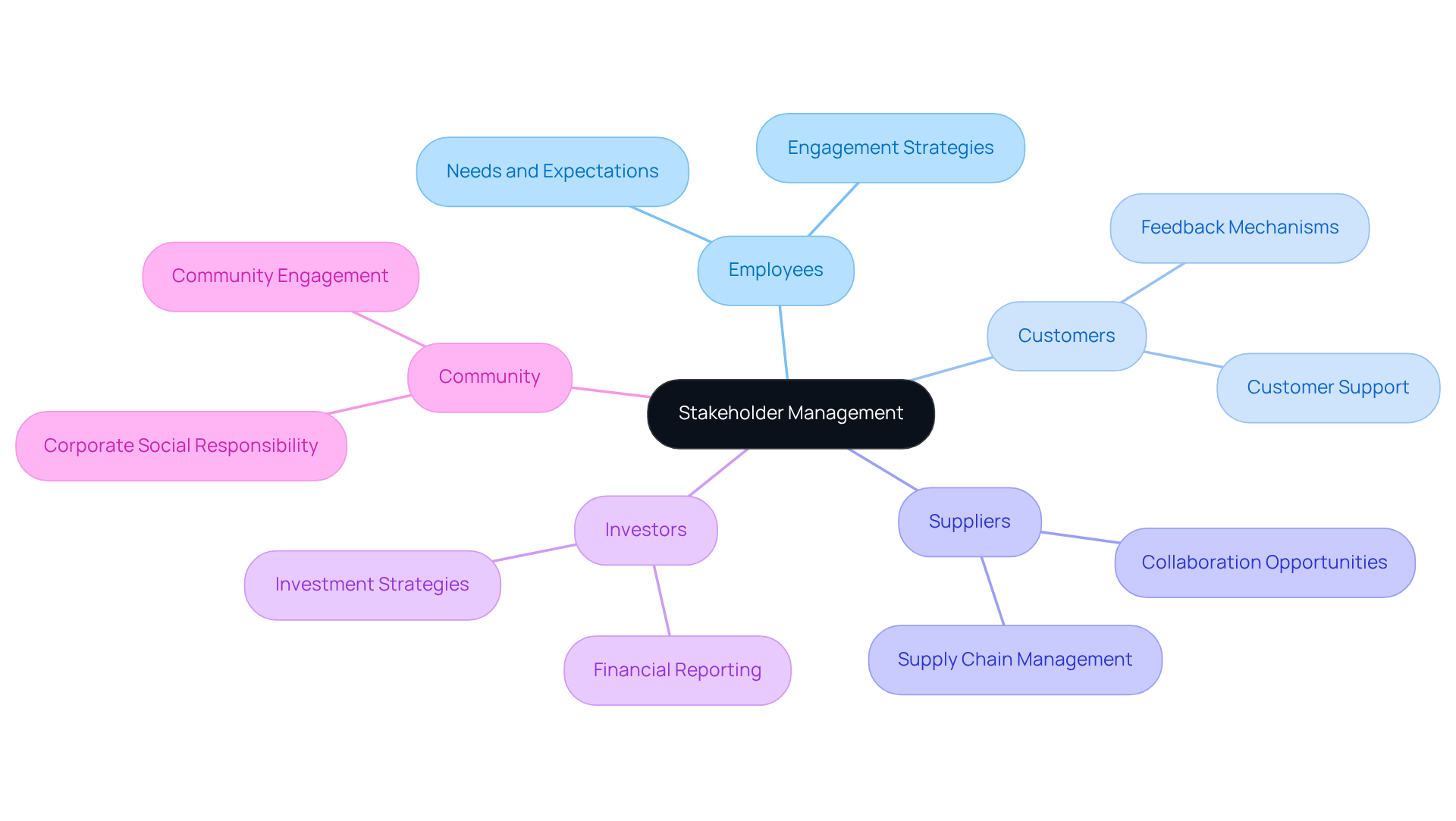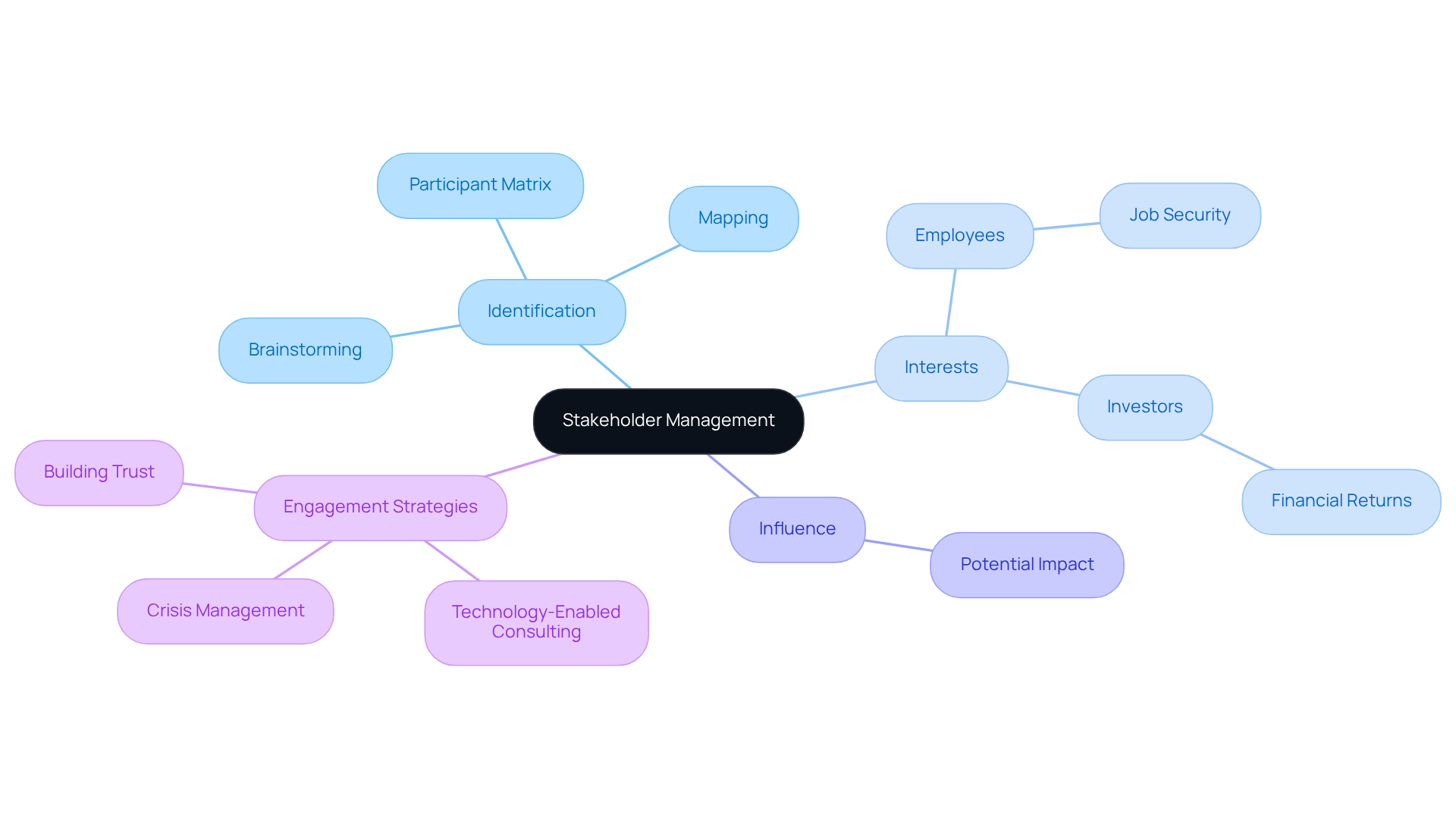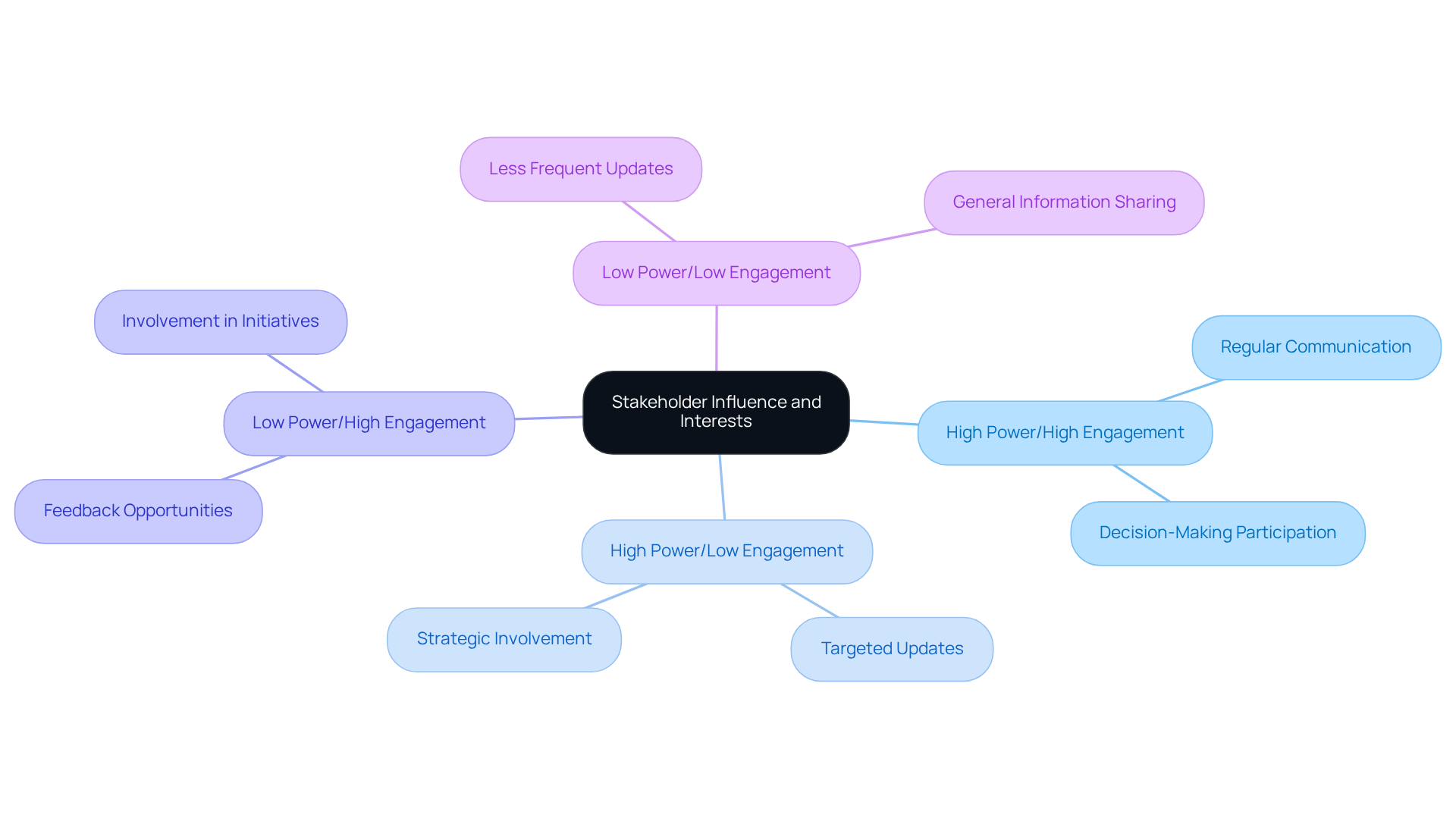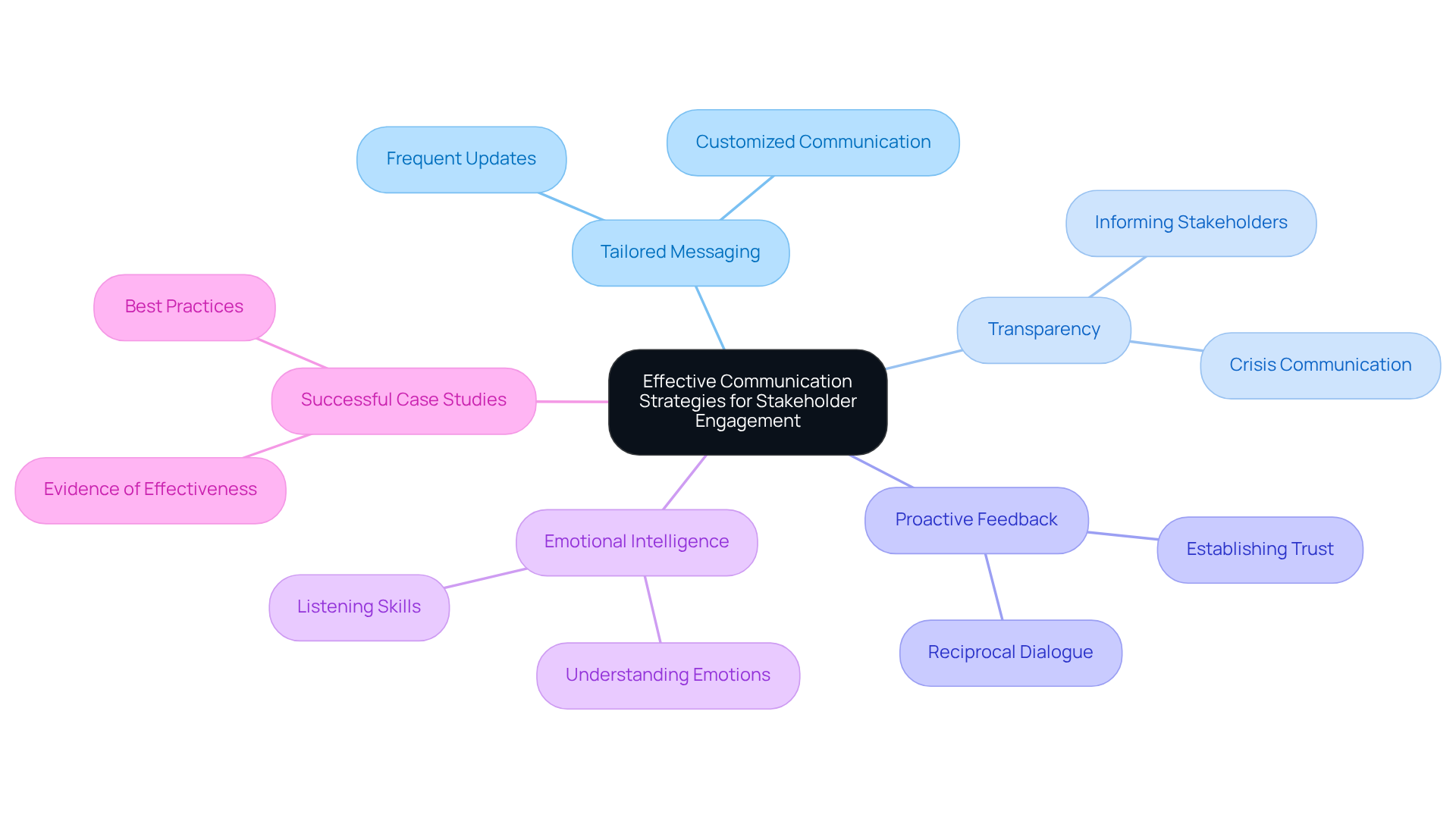Overview
Stakeholder management is a critical process that involves systematically identifying, analyzing, and engaging with various interested parties. This approach fosters collaboration and enhances decision-making. Effective stakeholder management is essential for aligning organizational goals with stakeholder interests, particularly during crises. By building trust and ensuring that all voices are considered, organizations can promote sustainable growth and stability. Therefore, it is imperative to prioritize stakeholder engagement as a strategic action for long-term success.
Introduction
Understanding the intricate web of stakeholder relationships is crucial for any organization aiming for sustainable success. Effective stakeholder management not only fosters collaboration but also mitigates risks and enhances decision-making, especially during crises when alignment is paramount.
However, how can organizations navigate the complexities of diverse interests and influence to ensure all voices are heard and valued?
This article delves into the essential steps of stakeholder management, offering insights on:
- Identifying stakeholders
- Analyzing stakeholder interests
- Engaging stakeholders to drive effective outcomes
Define Stakeholder Management and Its Importance
The process of stakeholder management entails the systematic identification, analysis, planning, and implementation of actions designed to engage with involved parties effectively. Stakeholders encompass anyone with an interest in the organization, including:
- Employees
- Customers
- Suppliers
- Investors
- The community
The significance of the process of stakeholder management is profound; it fosters collaboration, mitigates risks, and enhances decision-making processes. In times of crisis, the process of stakeholder management can be the pivotal factor between recovery and failure, ensuring that all groups are aligned and striving towards common objectives. By comprehending the needs and expectations of interested parties, organizations can tailor their strategies to address concerns and garner support, ultimately promoting sustainable growth and stability.

Identify Stakeholders and Their Interests
Efficient management of interested parties is a key aspect of the process of stakeholder management, which begins with the recognition of all pertinent individuals involved. This can be achieved through:
- Brainstorming sessions
- Mapping involved parties
- Utilizing tools such as a participant matrix
Once participants are identified, it is essential to explore their motivations, goals, and the potential influence they may exert on the entity. For instance, employees often prioritize job security, while investors typically focus on financial returns.
Finding equilibrium among competing claims from different interest groups is crucial for the process of stakeholder management, as this harmony ensures that all voices are considered. By classifying interested parties into distinct groups according to their interests and influence, organizations can develop targeted strategies that address specific issues and foster positive relationships.
Moreover, leveraging technology-enabled consulting services can enhance participant engagement and streamline the process of stakeholder management. This understanding becomes particularly vital during crisis situations, where the assistance of involved parties can play a critical role in recovery efforts.
Involving relevant parties effectively not only builds trust but also aligns their priorities with the organization's objectives, paving the way for sustainable growth. Significantly, all parties involved must share in the benefits and drawbacks of any circumstance, reinforcing the interconnectedness of participant dynamics.

Analyze Stakeholder Influence and Interests
Once participants have been recognized, the next step is to assess their impact and priorities. This involves evaluating the influence each stakeholder possesses and how their priorities align or clash with the entity's goals. Tools such as the Power/Interest Grid are invaluable for visualizing this analysis. Stakeholders can be classified into four categories:
- High power/high engagement
- High power/low engagement
- Low power/high engagement
- Low power/low engagement
This categorization enables organizations to determine where to focus their engagement efforts within the process of stakeholder management. For instance, individuals with significant power and strong interest should be prioritized for regular communication and participation in decision-making processes, while those with limited power and minimal interest may require less frequent updates.
Understanding these dynamics is crucial for managing crises effectively and ensuring that key parties are involved in the process of stakeholder management during the recovery. To support this, companies can leverage real-time business analytics to continuously monitor participant engagement and adjust strategies accordingly. Statistical insights reveal that 82% of survey participants employ defined strategies when involving interested parties in data and analytics initiatives. This suggests that entities with robust engagement strategies can align their objectives more effectively with the interests of those involved in the process of stakeholder management.
Furthermore, as Warren G. Bennis noted, 'Leaders must gain the trust of their teams, their institutions, and their supporters before trying to secure their backing.' This underscores the importance of establishing trust in relationships with interested parties. Additionally, organizations can measure participant engagement through metrics such as event attendance and survey response rates, which provide tangible indicators of participation and alignment with organizational goals. By applying the lessons learned from engagement interactions, businesses can cultivate strong, lasting relationships that enhance overall performance.

Engage Stakeholders Through Effective Communication Strategies
Efficiently involving interested parties is essential in the process of stakeholder management, which necessitates the implementation of customized messaging approaches that address their distinct needs and preferences. Frequent updates through newsletters, meetings, or digital platforms, coupled with tailored communication for key participants, are vital components of this strategy.
Transparency is paramount in the process of stakeholder management, as interested parties must be kept informed about organizational changes, challenges, and successes. In crisis situations, a steady, hands-on approach to executive leadership is crucial. Our team stands ready to assist in identifying fundamental business problems and initiating transformational change through our established Rapid-30 process, ensuring that involved parties feel reassured about the entity's capacity to manage challenges while maintaining cash positions and fostering new growth.
Proactively seeking feedback is an essential part of the process of stakeholder management, as it fosters a reciprocal dialogue, establishes trust, and enables entities to address issues proactively. Research indicates that entities emphasizing openness in their interactions improve the process of stakeholder management, leading to significantly increased levels of trust and engagement from interested parties.
Notably, studies reveal that successful interaction comprises 20 percent what you understand and 80 percent how you feel about what you understand, underscoring the importance of emotional intelligence in interaction strategies. By employing a strategic interaction framework that emphasizes listening and understanding underlying emotions, organizations can enhance participant engagement and support, ultimately driving successful outcomes.
Furthermore, referencing successful case studies of stakeholder communication during crises provides tangible evidence of the effectiveness of these strategies.

Conclusion
The process of stakeholder management is essential for organizations aiming to cultivate strong relationships with all parties involved. By systematically identifying, analyzing, and engaging stakeholders, organizations can foster collaboration, mitigate risks, and enhance decision-making. This strategic approach not only aligns the interests of various groups but also serves as a critical factor in navigating challenges and achieving sustainable growth.
Key insights from the article highlight the importance of:
- Recognizing stakeholder interests
- Assessing their influence
- Employing effective communication strategies
Identifying stakeholders through various methods, understanding their motivations, and categorizing them based on their power and engagement are crucial steps in the stakeholder management process. Moreover, transparent and tailored communication fosters trust and encourages active participation, which is vital, especially in times of crisis.
Ultimately, the significance of effective stakeholder management cannot be overstated. By prioritizing engagement and communication, organizations can not only address the needs and concerns of their stakeholders but also drive better outcomes and foster a culture of collaboration. Embracing these best practices will empower organizations to navigate complexities, enhance relationships, and ultimately thrive in their respective fields.
Frequently Asked Questions
What is stakeholder management?
Stakeholder management is the systematic process of identifying, analyzing, planning, and implementing actions to effectively engage with parties that have an interest in an organization.
Who are considered stakeholders?
Stakeholders include anyone with an interest in the organization, such as employees, customers, suppliers, investors, and the community.
Why is stakeholder management important?
Stakeholder management is important because it fosters collaboration, mitigates risks, and enhances decision-making processes. It can be crucial during crises, helping organizations recover and align all groups towards common objectives.
How does understanding stakeholders' needs benefit organizations?
By understanding the needs and expectations of stakeholders, organizations can tailor their strategies to address concerns and gain support, which promotes sustainable growth and stability.




